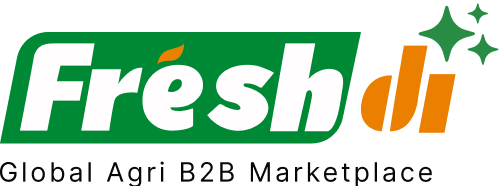🌶️ Introduction – Current State of Play: The Pepper Sector in Thailand
It’s Week 22 of 2025, and Thailand’s pepper market is buzzing — not just from the heat of the spice, but from a whirlwind of global events shaking up the industry.
In recent months, Thailand’s agriculture sector has weathered literal storms. Severe floods in late 2024 damaged over 8.6 million rai of farmland, disrupting harvests and logistics. These natural disasters, combined with global climate change, have led to a significant drop in pepper yields and higher production costs across major producing countries, including Thailand.
At the same time, pepper prices have soared to historic highs. This is partly due to declining global production — farmers are shifting to crops with better returns — and partly because of tight supply chains and robust, steady demand from major markets like the U.S., EU, and China. Speaking of China, after slashing imports from Vietnam last year, they’re expected to return to the market post-Tet (February 2025), which could redirect trade flows and impact Thai exporters.
For businesses sourcing pepper from Thailand, the message is clear: stay alert, stay agile, and stay informed. Platforms like Freshdi offer real-time supplier verification, RFQ trends, and market insights — essential tools in a time of fast-changing dynamics.
📰 Deep Dive – What’s Making Headlines? Key Recent News & Impacts
Let’s look at the major developments shaking up the pepper sector in Thailand and beyond:
-
Weather Woes: Devastating floods in Thailand and unpredictable rain-drought cycles across Asia have lowered yields, particularly affecting Thailand’s piper pepper crops.
-
Supply Chain Squeeze: Freight costs are up 45% in early 2025 due to Red Sea tensions. Port congestion is also causing shipping delays, impacting pepper exports and imports alike.
-
Price Surge: Vietnam’s benchmark export price hit $5,280/ton in 2024 — a 44.4% increase year-on-year. As a result, Thai pepper is being sold at a premium, but only if quality and delivery match.
-
Changing Trade Winds: China sharply reduced pepper imports in 2024 but is expected to return strongly in 2025. This shift could open new doors for Thai exporters.
-
Shift in Cultivation: Farmers in Thailand and elsewhere are switching to higher-margin crops like durian, reducing pepper-growing areas and tightening supply further.
🏆 Top 3 Verified Pepper Suppliers in Thailand – Adapting to Today’s Market
Here are the three standout Thai pepper suppliers in Week 22 of 2025 based on export readiness, international reach, certifications, and user feedback on Freshdi:
1. KT PARTNER CO.,LTD.
- Specialization: Dried red chili and pepper blends
- Strengths: High export volume, consistent product quality
- Certifications: Likely to hold HACCP and GMP certifications (check Freshdi for updated details)
- Edge: Strong logistics capabilities, crucial in a time of port congestion
2. Hesco Solution Co., Ltd.
- Specialization: Whole and ground black pepper
- Strengths: Strong regional distribution network across Southeast Asia
- Certifications: ISO and Halal, suitable for international food processing customers
- Edge: Competitive pricing and reliable delivery amidst freight volatility
3. ASIACHAI FOOD & BEVERAGE COMPANY LIMITED
- Specialization: Thai condiment blends featuring red pepper
- Strengths: Value-added products for retail and foodservice
- Certifications: FDA, Halal, and potential BRC certifications
- Edge: Unique positioning in processed pepper-based products, great for brand differentiation
🔄 Dynamic Ranking Note
Remember, platforms like Freshdi offer dynamic rankings such as “Suppliers of the Month/Quarter,” reflecting real-time trade activity, buyer reviews, and RFQ performance. Always check for the latest supplier insights before making sourcing decisions.
📊 Market Navigation – Strategic Responses to the Prevailing Pepper Landscape in Thailand
So, what should companies be doing now to stay ahead in the Thai pepper market?
🔍 Immediate Opportunities
- Export Potential: With Vietnam’s production down and China re-entering the market, Thailand has a chance to fill the gap.
- Premium Pricing: Elevated global prices mean higher margins for exporters who can meet demand with quality and speed.
- Domestic Leverage: With 90% of raw materials locally available, Thai companies can reduce reliance on imports and stabilize costs.
⚠️ Key Challenges
- Supply Instability: Climate-related risks are real. Floods, droughts, and erratic rainfall make production unpredictable.
- Import Dependencies: Thailand still imports 37% of its pepper, especially from Turkey, India, and Vietnam. Price swings in these markets ripple through Thai procurement.
- Quality Competition: Vietnamese and Indonesian exporters are setting high standards. Thai suppliers need to match or exceed in quality and logistics.
🧠 Sourcing Strategies
- Diversify Suppliers: Don’t rely on a single source. Freshdi’s verified supplier list can help identify backup options in Turkey, India, and Vietnam.
- Go Local When Possible: With 90% of agricultural inputs available locally, local sourcing minimizes shipping delays and cost inflation.
- Use Real-Time Data: Stay updated using Freshdi’s RFQ analytics and market insights to time your purchases wisely.
⏳ Short-Term Outlook
- Prices: Expect them to remain high through 2025 due to low supply and strong demand.
- Demand: U.S. and EU markets are stable. China’s reactivation post-Tet is a wildcard that could drive another price spike.
- Production: Thai output is expected to grow slowly — only 0.8% annually — but consistent investment in climate resilience could improve this figure.
📌 Key Takeaways – Navigating a Rapidly Evolving Market
Let’s break it down. If you’re sourcing pepper from Thailand in 2025, here’s what you need to keep in mind:
- Climate change is the biggest disruptor — plan for inconsistent yields and delayed shipments.
- Prices are high, but so is demand — especially from China, the U.S., and the EU.
- Thai suppliers are adapting fast — the Top 3 verified suppliers on Freshdi are great starting points.
- Diversify sourcing and use platforms like Freshdi to stay on top of market shifts, supplier performance, and RFQ opportunities.
✅ Buyer’s Checklist – Sourcing Pepper from Thailand in 2025
- [ ] Check updated supplier rankings on Freshdi
- [ ] Verify certifications (GMP, HACCP, ISO, Halal, BRC)
- [ ] Compare local vs. imported pricing
- [ ] Monitor weather impacts on yield forecasts
- [ ] Identify backup suppliers in Vietnam, India, and Indonesia
🔮 Future Outlook – What’s Next for Thailand’s Pepper Market?
Looking ahead to the second half of 2025 and beyond:
- Smart Agriculture: Expect more Thai farmers to adopt tech-driven farming to fight climate volatility.
- Export Diversification: Thailand may expand exports beyond traditional markets to Africa and the Middle East.
- Value-Added Products: Growth in processed pepper products (like sauces and spice blends) will rise due to global foodservice demand.
Platforms like Freshdi will become more vital than ever — acting not just as a marketplace but as a strategic tool, offering live RFQ updates, supplier performance data, and global pepper trends tailored to your sourcing goals.
📚 References
- Thailand Pepper Market Report – IndexBox
- Chili and Pepper Market Forecast – IndexBox
- Pepper Prices Forecast – Elmar Spices
- Freshdi Supplier Insights – Freshdi
- Global Chili Market – GlobeNewswire
- Thailand Pepper Imports – Volza
❓ FAQs
1. Why are pepper prices so high in 2025?
Due to a global supply crunch caused by climate change, reduced cultivation, and logistic bottlenecks. Demand remains strong, especially from China and Western markets.
2. Which Thai pepper supplier is best for export?
KT PARTNER CO.,LTD., Hesco Solution Co., Ltd., and ASIACHAI FOOD & BEVERAGE COMPANY LIMITED are top picks in Week 22 of 2025.
3. How can I verify Thai pepper suppliers?
Use platforms like Freshdi which provide supplier verification, certifications, and real-time trade data.
4. Is Thailand a net exporter or importer of pepper?
Thailand is both — it produces and exports pepper but also imports large volumes, especially from Vietnam, India, and Turkey to meet domestic demand.
5. What’s the forecast for Thai pepper production?
It’s expected to grow slowly (0.8% annually) reaching 20,400 metric tons by 2026, though climate risks may affect this trajectory.


